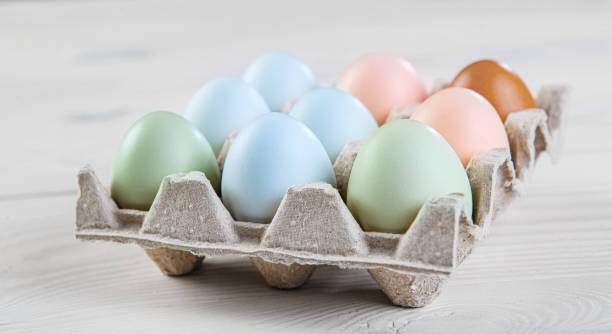Are you worried about the difference in color when buying eggs at the grocery store?
I used to think that brown eggs are more nutritious than white eggs, and I thought they were healthy, but I was wondering what they were actually like.
From the conclusion, it seems that brown eggs are likely to be organic eggs, but regarding nutrients, it seems that there is no big difference between the two just by the difference in shell color.
It seems that the reason why the color of the egg shell is different in the first place is not the nutrition but simply the breed of the chicken that lays the egg.
According to the Japan Egg Industry Association, chickens with brown or dark feathers generally lay brown eggs, and chickens with white feathers lay white eggs.
Even though there is no big difference between white and brown eggs, you want to eat nutritious eggs, don’t you?
It seems that there is almost no difference in nutrients due to the difference in the color of the shell, but it seems that the nutritional value, taste, and other qualities differ depending on the health condition of the chicken that laid the egg, the environment in which the chicken are raised, and the freshness of the egg.
You’re wondering how to tell that, right?
As for the environment for raising, it is easy to distinguish because there is an organic notation and a notation that it is free-range on the recent products.
As for food the chicken eat, chicken eggs that eat corn are generally considered to be delicious, and even though there is almost no difference in nutritional value, breeds that produce brown eggs tend to be larger. It seems that they consume a lot of food to maintain their body, so there seems to be a slight difference in nutritional value to the extent that it does not affect the human body.
Regarding the freshness, I think that you choose eggs by being concerned about the expiration date, but in Japan, the expiration date seems to be printed 14 days ahead of the date when the eggs are packed.
The date of packing is different from the spawning date, and it seems that some vendors are likely to abuse this mechanism, but depending on the product, the spawning date is indicated on the pack, so it can be one of the purchase criteria.
In addition, due to the air chamber inside the egg, the bright part of the fresh egg seems to be smaller when it is seen through the light, and on the contrary, the bright part of the egg that is less fresh seems to be larger.
Also, when checking the freshness at home, related to the air chamber, when it is submerged in salt water, it is a fresh proof if it does not float. If it floats to the surface of the water, there is a high possibility that the freshness has dropped.
Also, selling eggs at room temperature seems to be a hotbed for Salmonella, so be sure to choose a store that sells refrigerated.
By the way, it seems that eggs with a light blue shell are laid from a chicken called Araucana, which is native to Chile.
This time, I introduced how to choose a delicious egg by taking a leap from the difference in the color of the egg shell. How was it?
Please take this opportunity to choose and eat delicious eggs!


コメント